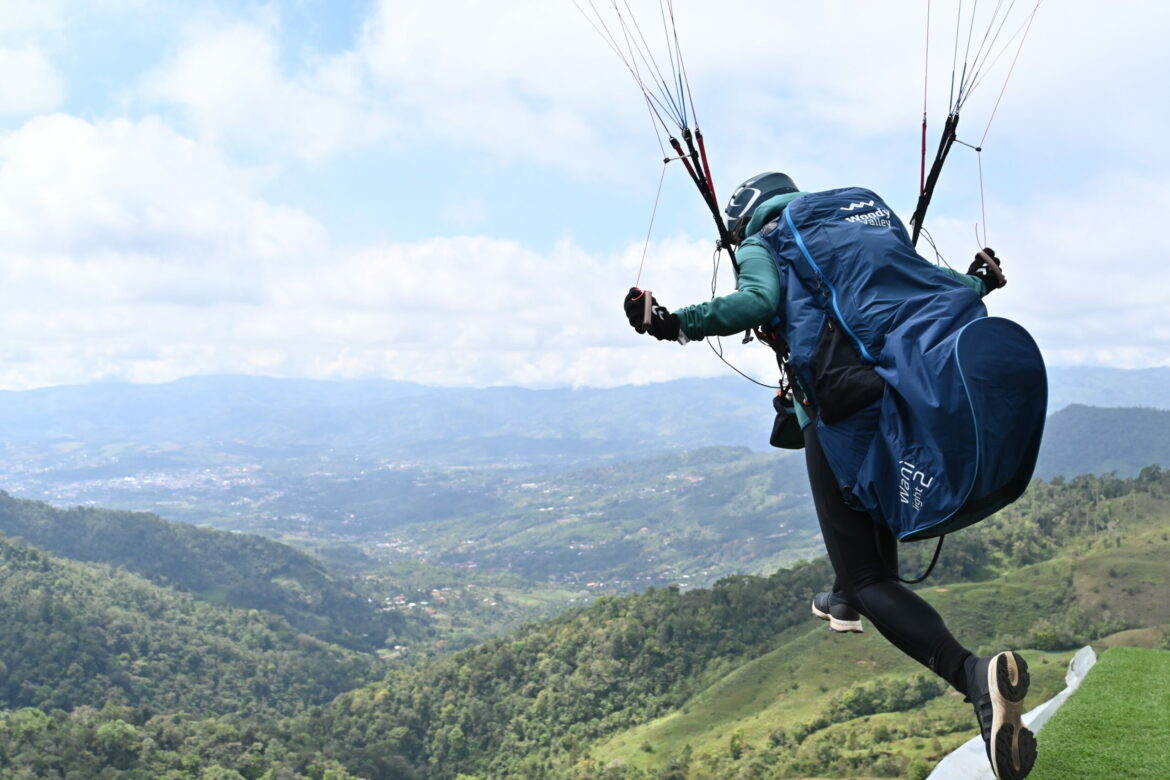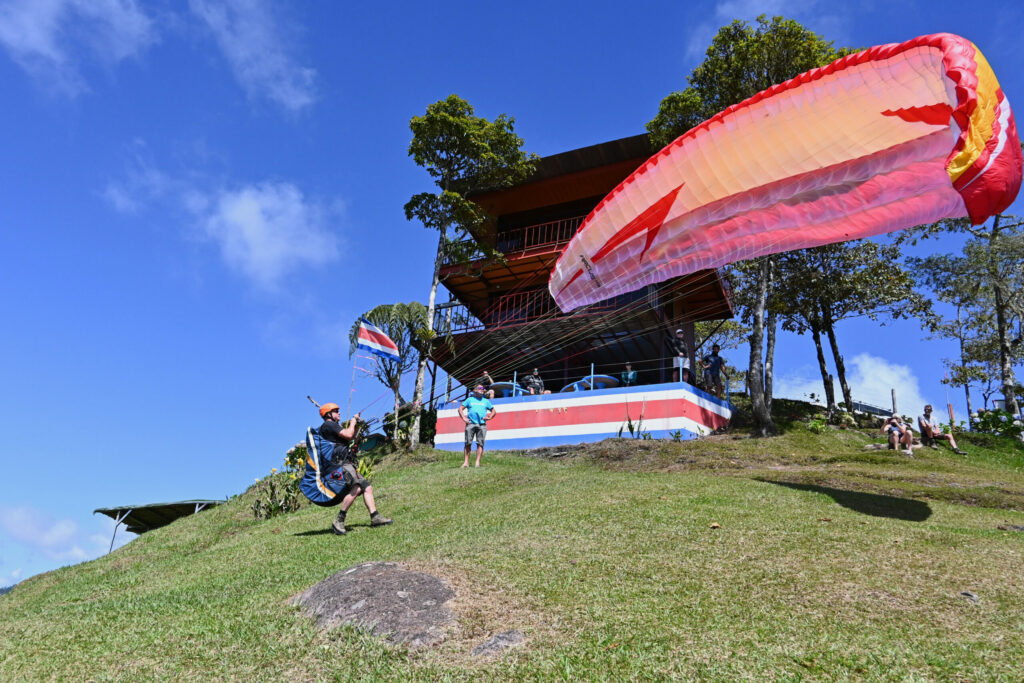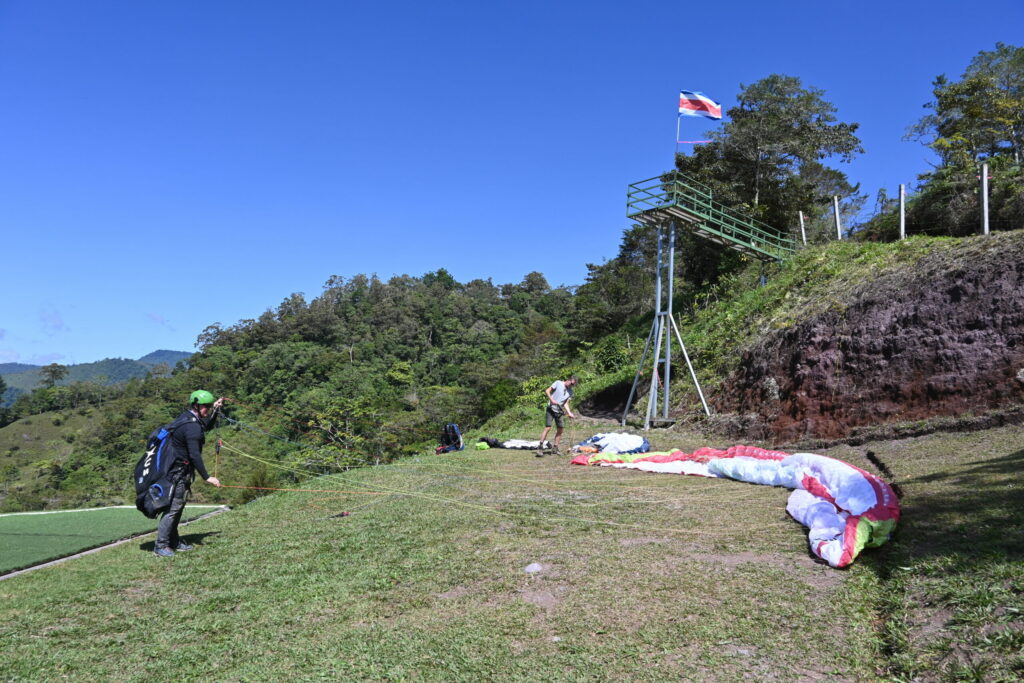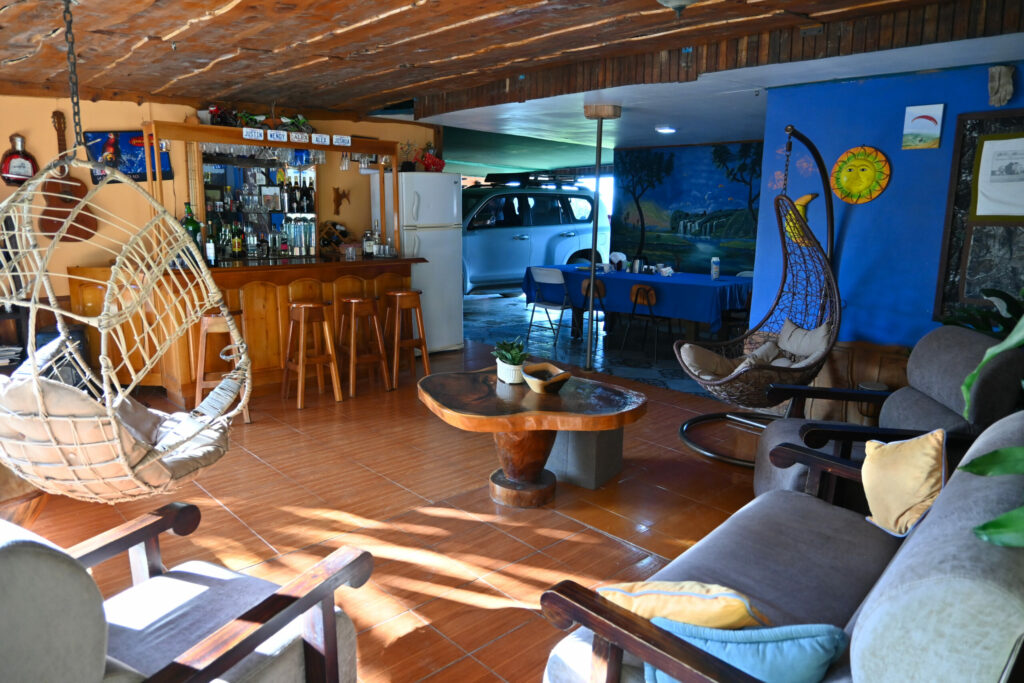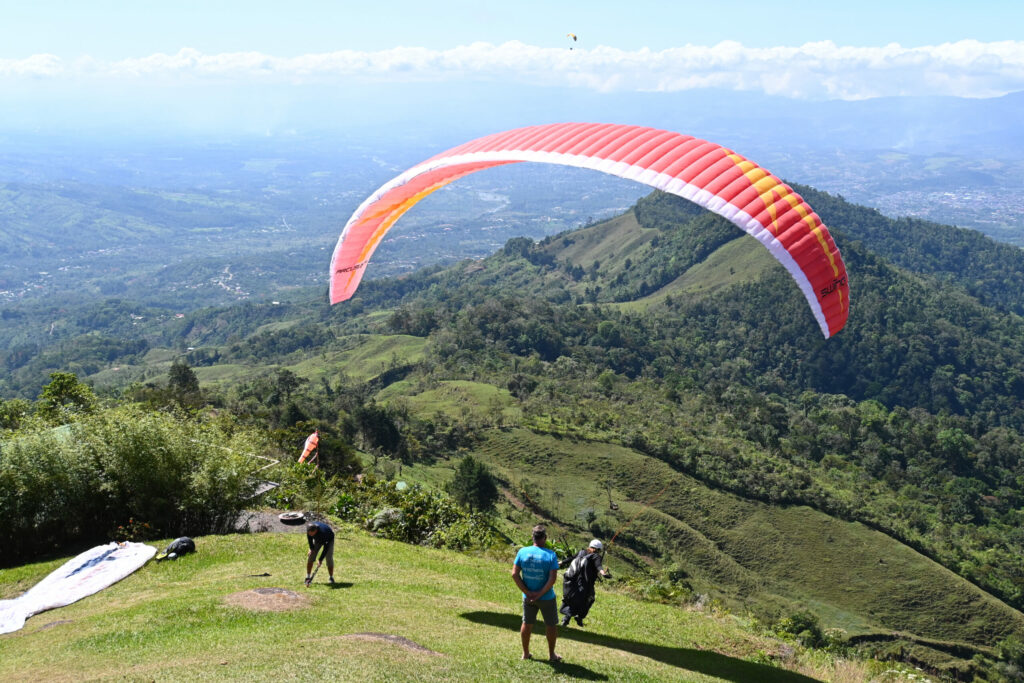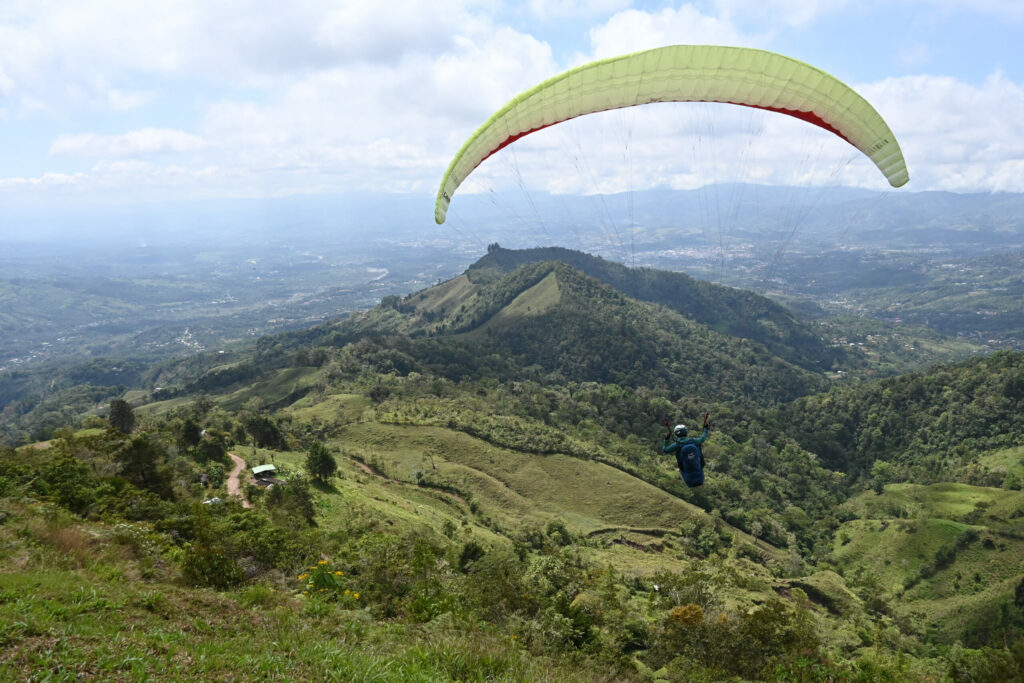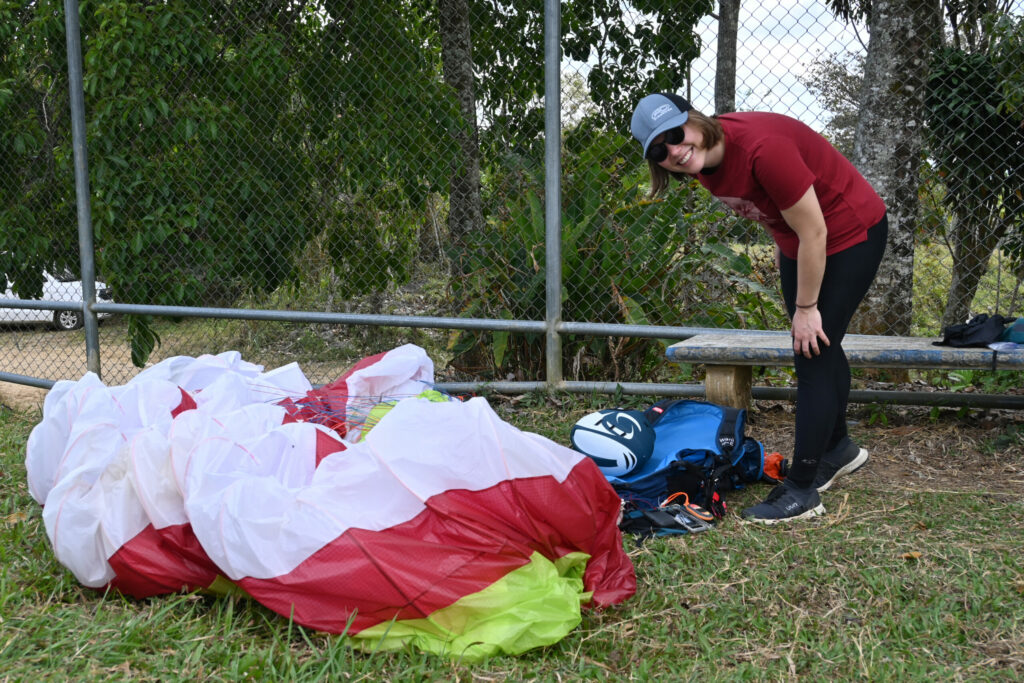Rivas is said to be the XC flying paradise. It offers an interesting mix of mountain and flatland flying that is quite unique. The town is located in the mountains of Costa Rica, only a few hours’ drive from another great flying site, Dominical. While we weren’t too successful ourselves, we definitely see the potential, enjoying the scenic views and the cool vibes.
As already mentioned in our other side guides – we want to pass on information we wished we could have looked up before going somewhere, but we are no experts in those areas, we haven’t spent a lot of time there and haven’t experienced the full variety of conditions. Also, the world keeps changing. So please take everything with a grain of salt and always contact the local experts 😉
Map
Takeoff
It’s called Alex Launch and is owned by, you guessed it, Alex. He set up two takeoff areas for his tandem operation and solo pilots. The lower one is a grass strip with a nice gradient and only a few bumps that you need to take care of when launching. The upper launch is flat and you take off a platform after having the glider up and stabilized.
We’ve been at takeoff usually around 9:50 am and waited for the first cumulus clouds to form before launching (usually at ~10:30-11h). Until then, you can relax and have a chat with the local pilots in the shade of the open building at takeoff. It’s also a prime spot for watching others taking off and a toilet is available as well.
How to get there?
Let’s talk about “where to stay?” first. That’s because Alex is not only maintaining the launch but also offers accommodation halfway down to Rivas. It’s a really nice and lively place and you get an “all-inclusive” package with nice rooms, a pool, varied breakfast, drive up to the takeoff, pickup from town, and sometimes shared dinner and even karaoke sessions. We enjoyed the companionship of other pilots and it was very easygoing.
You don’t need to stay at his place, of course, to fly in Rivas and are surely able to find a lift from town. It’s quite a bumpy road up, though. In any case, write Alex a WhatsApp in advance to check your options and let him know you want to fly there.
To get to Rivas, you can take the bus to San Isidro and then onwards to Rivas (see map). Or you again make use of Alex’s service and drive up with him from Dominical, after he has done some tandem flights there (which he often does).
Fees
As far as we know Alex doesn’t charge a takeoff fee. His room rates are between $30 and $60 and he charged us $10 per person per day for the lifts and $20 each for the drive from/to Dominical.
Flying & Weather
We got told that you can fly year-round. Even in the rainy season, you can fly in the morning until it starts to rain around midday. The wind at take-off usually comes from the southwest, up the valley. In the morning, there are sometimes still low clouds or an inversion present, but it gets pushed out eventually and first thermal clouds usually build up around 11. We always waited until we saw these clouds forming and tandem pilots confirming good conditions.
From the takeoff, you can spot a mountain ridge in the northeast, including the highest mountains of Costa Rica with over 3500 meters. On this ridge, clouds were often sitting looking like a “Föhnmauer”. This is because the ridge protects the valley from the northern Caribbean trade winds, providing consistent flying conditions. During our stay, though, the northern winds were unusually strong. We could feel the turbulences above 1900m and XC conditions were impacted as well.
After taking off, you can try to soar a bit close to the takeoff. The house-thermal is located a bit down the ridge, though. Ask or watch the local pilots. To get going, you can follow the ridge until it drops down to the city of San Isidro. With a tailwind, you can easily reach back to the landing in Rivas.
To continue, you can connect to thermals in the valley and jump to the ridge in the east and follow it down the valley. You can follow it for quite a while until you feel/see the northern wind push over the ridge. We never made it to this ridge but this is the standard cross-country route.
When you take off early (when the first clouds form), you can fly west first (see the map). It’s a scenic route but when you don’t make it, it will take you some time to get back to Rivas (trust us ;-)).
Landing
The landing spot in Rivas is the local football field. It is located at the end of town heading into the valley and is enclosed by a fence (the gates are always open). The wind is always coming up the valley and can be quite strong, so make sure to not let yourself get pushed back too much. Also, don’t worry if a game is going on, the locals are used to pilots landing and will happily pause it for you. During mid-day, it can become turbulent during landing — either land early or be prepared.
In case you made the mistake of flying too deep into the valley and don’t reach Rivas, there is an alternative football field in front of the next village (see map). Generally, as mentioned in our Costa Rica guide, every tiny village in the region got a football field that is suitable for landing in case you don’t make it.
When you fly out of the valley, there is an airfield that can be used as a backup landing. Usage is discouraged, though, so if you land there in lack of other options, touch down close to the tower and leave the property as soon as possible. Another option is a field next to the gravel plant located at the river Río General.
Further information
- Our Rivas experience
- Get in touch with Alex via WhatsApp (+506 8345 5135)
- Zion Site Guide
- SkyHigh Costa Rica (German)
Our Flights
- 04.02.2023: 1:20 h | 17.8 XC km
- 05.02.2023: 1:39 h | 17.7 XC km
- 06.02.2023: 0:38 h | 9.6 XC km
- 07.02.2023: 0:56 h | 13.0 XC km
- 08.02.2023: 0:53 h | 7.1 XC km
